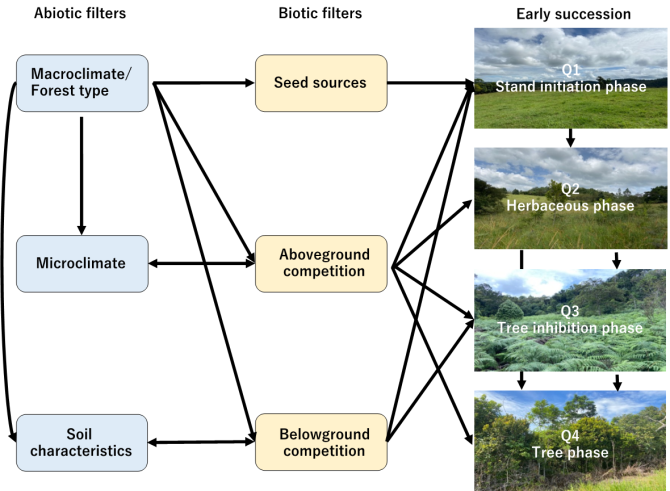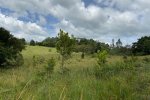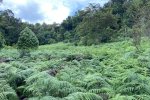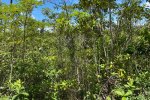
Project
Key drives on tropical forest succession
Tropical forests are among the most indispensable ecosystems on Earth. However, mature tropical forests have been lost at the alarming rate, and thus interest in tropical secondary forests has increased. This study aims to analyze the different drivers of early vegetation dynamics to understand the underlying mechanisms of secondary succession.
Introduction
Tropical forests are among the most indispensable ecosystems on Earth. They store up to 25% of carbon and harbor the majority of the world’s tree diversity, with an estimated 53,000 tree species. Over half of the world’s mature tropical forest area has been lost due to the anthropogenic disturbances such as logging, cultivation or ranching. Despite this alarming rate of mature forest loss, other previously cleared areas are being abandoned and are naturally regenerating with forests. Therefore, interest in tropical secondary forests has increased to understand the underlying mechanisms of secondary succession and the role of secondary forests for carbon sequestration and biodiversity recovery. While the knowledge of long-term secondary succession is normally obtained through chronosequence approaches, these approaches are very context specific because initial fine-scale spatial differences in environmental conditions and species composition can strongly determine the course of succession. Therefore, understanding vegetation dynamics of early succession, and following succession over time instead of space, are important to evaluate spatial differences in long-term successional trajectories.
Secondary succession is driven by multiple abiotic and biotic factors. The relative importance of abiotic and biotic factors changes along succession because of rapid changes in soil characteristics, microclimate, vegetation structure and species composition (Fig1). The pioneer species regulate environmental conditions in the understory, which can facilitate or inhibit the establishment of later successional species. Thus, conditions after land abandonment, and the identity and composition of the 'first arrivals', can strongly determine local-scale differences in the speed of forest recovery. Here I distinguish four phases in early succession: 1) stand initiation phase, 2) herbaceous phase, 3) tree inhibition phase, and 4) tree phase (Fig1).

Research question
This study aims to analyze the drivers of vegetation dynamics (i.e., species replacement and growth) during early secondary succession by addressing four research questions corresponding to the four chapters:
(Q1) How do landscape context, vegetation cover, and microclimate drive tree regeneration in the stand initiation phase?
(Q2) How does light competition drive vegetation dynamics in the herbaceous phase?
(Q3) How does competition with another gorwth form (Bracken fern) arrest succession in the tree inhibition phase?
(Q4) How does light competition drive tree species performance and community assembly in the tree phase?
Overarching hypotheses
Dispersal limitation and abiotic filtering drive vegetation dynamics shortly after agricultural abandonment. Subsequently, the importance of abiotic filtering declines over time, while the importance of biotic filtering (i.e., resource competition) increases.
Methods
I will address these research questions with different research frameworks. To evaluate how successional mechanisms may vary with macroclimate and forest type, research will be carried out in dry semi-evergreen forests and wet evergreen forests on Atherton tableland, northeast Australia. To obtain wider generalization, in Q4 I will make a pantropical comparison by including two additional wet forest sites in Ghana and Mexico. These additional sites are also part of the ERC-PANTROP project, and require therefore little additional work.
This research is part of the following Framework:





